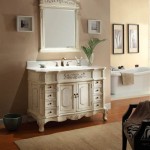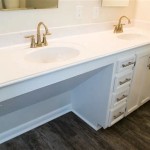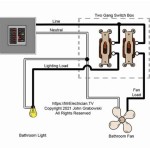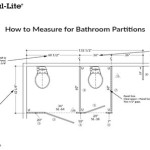```html
How To Install Handicap Bathroom Rails For Grab Bars
Installing handicap bathroom rails, commonly known as grab bars, is a crucial step in creating a safe and accessible bathroom for individuals with mobility challenges. Proper installation ensures the bars provide adequate support and stability, minimizing the risk of falls and injuries. This article provides a detailed guide on how to install grab bars effectively, adhering to safety standards and building codes.
Planning and Preparation
Before initiating the installation process, meticulous planning is essential. This involves assessing the bathroom layout, identifying appropriate locations for the grab bars, and selecting the right type of bars to meet specific needs. Understanding the user's requirements and potential challenges is paramount to ensuring optimal functionality.
The initial step involves identifying the individuals who will be using the grab bars. Consider their height, reach, and specific mobility limitations. This information will dictate the ideal placement and orientation of the bars.
Next, evaluate the bathroom layout to determine suitable locations. Common locations include near the toilet, inside the shower or bathtub, and adjacent to the sink. Consider the user's movements when transferring between these fixtures.
Choosing the right type of grab bar is critical. Options include straight bars, angled bars, and flip-up bars. Straight bars are versatile and suitable for various locations. Angled bars offer multiple gripping points and are often preferred near toilets. Flip-up bars provide support near the toilet while allowing for easy access when not in use.
Ensure the chosen grab bars comply with relevant accessibility standards, such as the Americans with Disabilities Act (ADA) guidelines. These standards specify the required length, diameter, and weight-bearing capacity of the bars.
Before commencing the installation, gather all necessary tools and materials. This typically includes:
- Grab bars
- Measuring tape
- Pencil or marker
- Stud finder
- Drill with appropriate drill bits (including tile drill bits if installing on tiled walls)
- Screwdriver (matching the screws provided with the grab bars)
- Level
- Safety glasses
- Dust mask
- Caulk or sealant (for sealing around the edges of the bars)
It is also crucial to verify the location of plumbing and electrical wiring before drilling into the walls. Contact a qualified professional if there is uncertainty about the presence of hidden utilities.
Installation Process
The installation process involves several key steps, ensuring proper alignment, secure mounting, and a finished appearance. Following these steps meticulously will guarantee the grab bars provide the necessary support and safety.
First, precisely mark the desired location for the grab bars on the wall. Use the measuring tape and level to ensure accurate placement. Refer to the previously gathered information about the user's needs and the bathroom layout.
Employ a stud finder to locate wall studs behind the drywall or tile. Ideally, the grab bars should be anchored directly into the studs for maximum stability. If studs are not conveniently located, consider using specialized wall anchors designed to support heavy loads. These anchors are available at most hardware stores.
If installing on a tiled wall, use a tile drill bit to create pilot holes before drilling into the underlying studs. This prevents the tile from cracking or chipping. Apply gentle pressure and drill at a slow speed.
After drilling the pilot holes, align the grab bar with the marked locations and insert the screws provided with the bars. Tighten the screws securely, ensuring the bar is firmly attached to the wall studs or wall anchors.
Use a level to verify that the grab bar is perfectly水平 before tightening the screws completely. This ensures the bar provides consistent support and prevents uneven weight distribution.
Once the grab bars are securely mounted, apply caulk or sealant around the edges of the bars where they meet the wall. This prevents water from seeping behind the bars and causing damage to the wall or creating a breeding ground for mold.
Allow the caulk or sealant to dry completely according to the manufacturer's instructions before using the grab bars.
Ensuring Stability and Safety
After installation, it is crucial to verify the stability and safety of the grab bars. This involves testing the bars' weight-bearing capacity and ensuring they are securely anchored to the wall.
Visually inspect the grab bars to ensure there are no loose screws or signs of movement. If any issues are identified, tighten the screws or replace the wall anchors as needed.
Apply pressure to the grab bars to test their weight-bearing capacity. Simulate the weight of the user to ensure the bars can withstand the intended load. If the bars flex or move significantly, they may not be adequately anchored.
If the grab bars are not securely anchored, consider consulting with a professional contractor to reinforce the mounting. This may involve adding additional studs or using heavier-duty wall anchors.
Regularly inspect the grab bars for signs of wear and tear, such as rust, corrosion, or loose screws. Address any issues promptly to prevent potential safety hazards.
Educate the user on the proper use of the grab bars. Explain the importance of gripping the bars firmly and avoiding sudden movements. Emphasize the limitations of the bars and the need for caution when transferring between fixtures.
Consider installing additional safety features in the bathroom, such as non-slip mats or shower chairs, to further enhance accessibility and minimize the risk of falls.
Ensure adequate lighting in the bathroom to improve visibility and reduce the risk of accidents. Install brighter light fixtures or add task lighting near the grab bars.
Keep the bathroom free of clutter to prevent tripping hazards. Remove any loose rugs or obstacles that could impede movement.
By following these guidelines meticulously, individuals can install handicap bathroom rails effectively, creating a safer and more accessible environment for those with mobility challenges. Remember, proper installation is paramount to ensuring the grab bars provide the necessary support and stability, minimizing the risk of falls and injuries.
```
Where Should Toilet Grab Bars Be Installed Freedom Showers

Ada Toilet Grab Bar Placement Guide Commercial Grabbars Com

Proper Shower Grab Bar Placement Keeps Your Family Safe Improveit

Ada Toilet Grab Bar Placement Guide Commercial Grabbars Com

Installing Grab Bars In Your Bathroom A Complete Guide

How And Where To Install Bathroom Safety Rails Grab Bars

Grab Bars In Accessible Toilet Compartments Ada Approved Harbor City Supply

Grab Bar Installation Hunker Bars In Bathroom Shower

4 Facts To Know About Bathroom Grab Bars

Handicapped Grab Bars Installation Maryland Dc Virginia In Bathroom Bar
Related Posts







